배터리 백업에서 집을 얼마나 오래 실행할 수 있습니까??
전원이 꺼질 때, 모든 사람의 마음에 대한 첫 번째 질문은입니다, "이것은 얼마나 오래 지속될 것인가?" 홈 배터리 백업이있는 경우, 다음 질문은입니다, "얼마나 오래 내 힘 마지막?" 시스템의 런타임 이해는 진정한 마음의 평화와 에너지 복원력을 갖는 데 중요합니다..
배터리 백업에서 집을 운영 할 수있는 시간은 전적으로 두 가지 주요 요인에 따라 다릅니다.: 배터리 시스템의 에너지 용량 (킬로와트시로 측정, 또는 KWH) 그리고 집이 소비하는 힘의 양 (전기 부하). 전형적인 현대 벽 장착 배터리 백업 10-15 KWH는 필수 가전 제품을 실행할 수 있습니다 12-24 시간, 더 큰 시스템은 며칠 동안 지속될 수 있습니다, 특히 태양 전지판으로 재충전 된 경우.
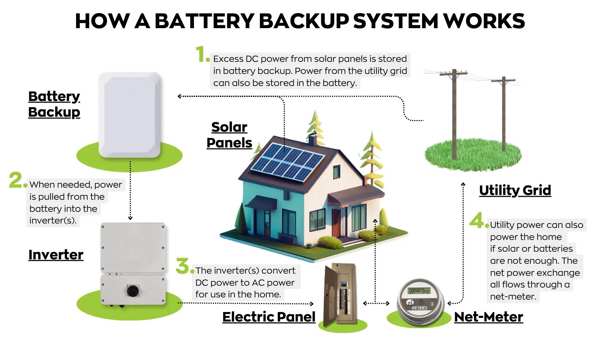
~에 Gycx 솔라, 우리는 런타임 및 에너지 독립성에 대한 고객의 특정 요구를 충족시키는 배터리 백업 시스템 설계를 전문으로합니다.. 한 가지 크기의 대답이 아닙니다, 그러나 맞춤형 솔루션을 만드는 것에 대해. 가정용 배터리 백업에 대한 가장 일반적인 질문을 살펴 보겠습니다..
집을 운영하기에 충분한 10kW 배터리입니다?
10kWh 배터리는 가정 에너지 저장에 매우 인기있는 크기입니다., 그러나 집 전체를 운영하는 것으로 충분합니까?? 좋은 질문입니다, 그러나 먼저, 우리는 용어를 명확히해야합니다: 배터리 용량은 측정됩니다 kWh (킬로와트시), 그것은 그것이 저장하는 에너지의 양입니다.
ㅏ 10KWH 배터리 종종 실행하기에 충분합니다 필수 회로 몇 시간 또는 밤새 전형적인 집에서. 여기에는 조명과 같은 것들이 포함됩니다, 냉장고, 인터넷 모뎀, 팬, 그리고 일부 의료 기기. 하지만, 단일 10kWh 배터리는 일반적으로입니다 집 전체를 운영하기에는 충분하지 않습니다, 특히 큰, 중앙 에어컨과 같은 파워 헝가리 기기, 오랜 기간 동안.
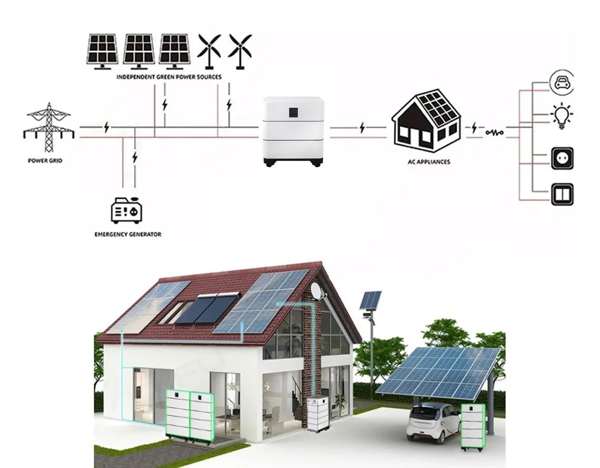
더 깊이 다이빙하십시오: 필수품 대 크기 vs. 집 전체
"충분합니까??" 당신의 목표에 따라 다릅니다.
- 필수적인 실행: 목표가 중단 중에 중요한 장치를 계속 실행하는 것이 목표라면, 10kWh 배터리는 환상적인 솔루션입니다. 필수 부하가 지속적으로 추가되는 경우 500 와트, 10kWh 배터리는 거의 전원을 공급할 수 있습니다 20 시간 (10,000 와트시 / 500 여 = 20 시간).
- 집 전체를 달리고 있습니다: 모든 것을 정상적으로 실행합니다, 피크 하중을 고려해야합니다. 중앙 에어컨만이 그릴 수 있습니다 3,000-5,000 와트. 총 부하가있는 경우 4,000 와트 (4 kW), 동일한 10kWh 배터리는 지속됩니다 2.5 시간 (10 kWh / 4 kw = 2.5 시간).
이것이 현대적인 이유입니다 벽 장착 배터리 백업 종종 모듈 식입니다. Essentials를 다루기 위해 단일 10kWh 또는 13.5kWh 장치를 설치할 수 있습니다., 또는 "스택을 할 수 있습니다" 달성하기 위해 2 ~ 3 개의 단위 20-30+ 진정한 집 전체 백업에 필요한 KWH 용량. Gycx Solar에서, 당사의 설계 프로세스는 부하 분석으로 시작하여 귀하에게 적합한 백업 수준을 결정하는 데 도움이됩니다..
배터리 백업은 발전기보다 더 나은 것입니다?
수십 년 동안, 정전에 대한 해결책은 화석 연료 생성기였습니다.. 그러나 최신 배터리 백업이 증가함에 따라, 오늘날의 주택 소유자에게 어떤 옵션이 더 좋습니다?
대부분의 주거용 응용 프로그램, ㅏ 배터리 백업 시스템은 발전기보다 낫습니다. 배터리 제공 순간적이고 조용한 작업, 배출물을 생산하지 않습니다, 유지 보수가 거의 필요하지 않습니다, 청정 에너지로 재충전하기 위해 태양 전지판과 완벽하게 통합 될 수 있습니다.. 발전기는 고출력 출력에 대한 초기 비용이 낮을 수 있습니다., 그들은 시끄 럽습니다, 지속적인 연료 저장 및 유지 보수가 필요합니다, 유해한 배기 가스를 만듭니다.
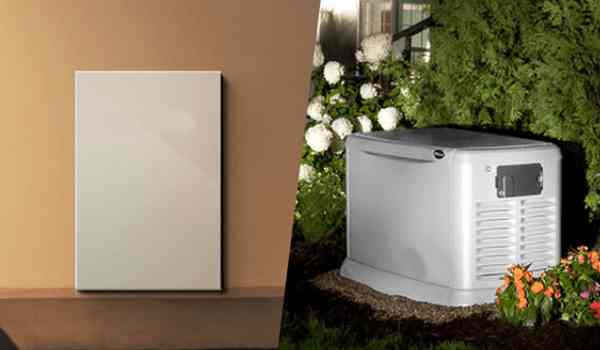
더 깊이 다이빙하십시오: 헤드 투 헤드 비교
주요 차이점을 살펴 보겠습니다:
| 특징 | 배터리 백업 (베스) | 휴대용/대기 생성기 |
|---|---|---|
| 응답 시간 | 동시에 일어나는. 힘은 원활합니다, 그리드가 다운된다는 것을 알지 못할 수도 있습니다. | 지연. 수동 시작 또는 자동 전송 스위치가 필요합니다. 10-30 두 번째 지연. |
| 소음 수준 | 사실상 침묵. 인버터에서 조용한 윙윙 거리는 소리가 들립니다.. | 매우 큰 소리. 당신과 당신의 이웃을 방해 할 수 있습니다. |
| 연료 | 그리드 또는 태양열에서 전기를 저장합니다. 연료가 필요하지 않습니다. | 일정한 가솔린 공급이 필요합니다, 프로판, 또는 디젤. |
| 유지 | 최소. 움직이는 부분이 없습니다, 오일 교환이 없습니다. | 정기적인. 오일 교환이 필요합니다, 연료 안정제, 그리고 정기적 인 테스트가 실행됩니다. |
| 배출 | 없음. 차고 또는 유틸리티 룸에 설치되도록 깨끗하고 안전합니다.. | 유해한 배기 가스 (일산화탄소). 창문과 문에서 멀리 떨어져 있어야합니다. |
| 달리기 비용 | 태양열로 청구 될 때 매우 낮거나 무료. | 높고 가변, 연료 가격에 따라. |
| 완성 | 태양 자체 소비 및 태양 광 투자 극대화에 적합합니다. | 완전히 별도의 시스템. |
발전기에는 여전히 특정 오프 그리드 또는 산업 응용 분야가 태양없이 매우 긴 런타임을 필요로하는 곳이있을 수 있습니다., 현대 가정 복원력을 위해, 깨끗합니다, 조용한, 자동 배터리 백업 시스템이 우수한 선택입니다.
배터리 백업은 많은 전기를 사용합니다?
배터리 백업 시스템은 연결 및 준비를 통해서만 상당한 양의 에너지를 낭비합니까?? 시스템 자체가 에너지 배수인지 묻는 것은 공정한 질문입니다..
아니요, 최신 배터리 백업 시스템은 많은 전기를 사용하지 않습니다.. 그들은 매우 효율적으로 설계되었습니다. 주요 에너지 "비용" 충전 및 배출 과정에서 작은 손실입니다., 알려진 왕복 효율성. 고품질 리튬 배터리 시스템은 라운드 트립 효율을 가지고 있습니다. 85-95% 이상, 에너지가 거의 낭비되는 것을 의미합니다. 그들은 또한 최소값을 가지고 있습니다 대기 전원 드로우 전자 제품을 온라인으로 유지하고 준비합니다.
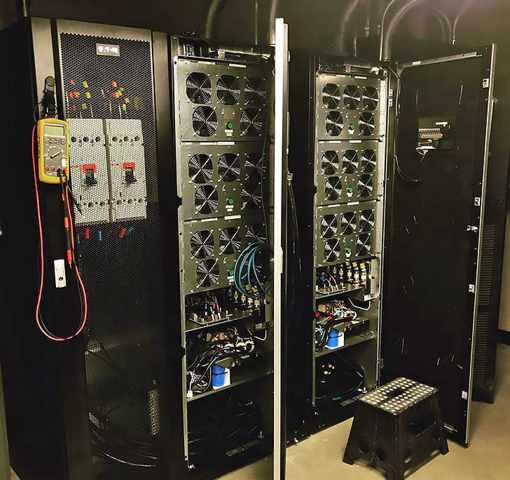
더 깊이 다이빙하십시오: 효율성 및 대기로드
Bess가 사용하는 에너지를 분해합시다:
- 왕복 효율성 (RTE): 이것이 주요 요인입니다. 당신이 넣으면 10 kWh 배터리에 태양 에너지가 있습니다 95% RTE, 당신은 얻을 것입니다 9.5 유용한 전기의 KWH. 그만큼 0.5 KWH는 변환 및 화학 공정 중에 열로 손실됩니다.. 이것은 다른 형태의 에너지 저장에 비해 매우 낮은 손실입니다.. 구형 리드산 시스템, 예를 들어, 주변의 더 낮은 RTE가 있습니다 80-85%.
- 대기/유휴 소비: 시스템의 인버터 및 배터리 관리 시스템 (비엠에스) 전원을 켜야합니다 24/7 시스템을 모니터링하고 즉시 전력을 제공 할 준비가되어 있습니다.. 이 대기로드는 일반적으로 매우 작습니다, 종종 20-100 와트. 24 시간 동안 약간의 에너지를 소비합니다, 시스템이 저장하고 전달할 수있는 것의 작은 부분입니다..
- 자제력: 다른 기사에서 논의한 것처럼, 배터리 자체는 시간이 지남에 따라 약간의 충전량을 천천히 잃게됩니다. (1-3% LFP 리튬의 경우 매월). 하지만, 시스템은 항상 연결되어 있으므로, 인버터의 플로트 충전은 이것을 쉽게 보상합니다..
대량의 에너지와 비교하여 a 벽 장착 배터리 백업 정전 중에 제공되는 귀중한 보안을 저장하여 저장할 수 있습니다., 운영에 사용하는 소량의 에너지는 무시할 수 있습니다..
배터리 백업은 몇 년 동안 지속됩니까??
배터리 백업 시스템은 주택 인프라에 대한 상당한 투자입니다.. 이 투자가 교체되기 전에 얼마나 오래 지속될 것으로 예상 할 수 있습니까??
현대 벽 장착 배터리 백업 그것은 사용합니다 LFP (리튬 철 포스페이트) 배터리 화학 예상되는 운영 수명이있는 장기 자산입니다. 10 에게 20 연령. 이 시스템은 일반적으로 a 10-연도 제조업체의 보증 일정 수준의 성능을 보장합니다, 내구성에 대한 자신감을줍니다. 이것은 오래된 납산 배터리 시스템에서 큰 도약입니다., 종종 교체가 필요했습니다 3-7 연령.
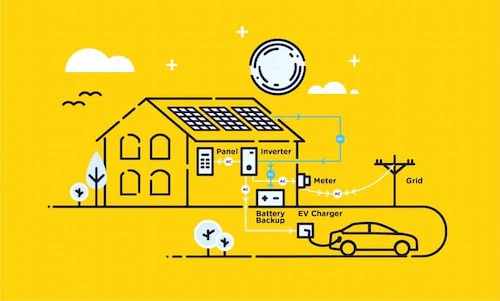
더 깊이 다이빙하십시오: 오래 지속되는 배터리 시스템 제작
최신 배터리 백업의 수명은 몇 가지 주요 기술 발전의 결과입니다.:
- LFP 화학: 리튬 철 포스페이트는 엄청나게 안정적이고 강력합니다. 상당한 저하없이 수천주기 동안 매일 충전 및 배출을 처리 할 수 있습니다.. 배터리 등급 6,000 사이클은 이론적으로 끝날 수 있습니다 16 하루에 한 주기로 몇 년.
- 고급 배터리 관리 시스템 (비엠에스1. ): BMS는 배터리의 보호자입니다. 과충전과 같은 스트레스가 많은 조건으로부터 세포를 보호합니다, 과방전, 극한 온도, 모든 것이 삶을 확장하는 데 중요합니다.
- 적절한 열 관리: 베스 인클로저, a 벽 마운트 배터리 단위 또는 캐비닛, 열을 방출하고 세포를 이상적인 온도 범위에서 유지하도록 설계되었습니다.. 이것은 조기 노화를 방지합니다.
- 보증: 10 년 보증은 평판이 좋은 가정 에너지 저장 시스템의 업계 표준입니다.. 일반적으로 배터리가 원래 용량의 일정량을 유지할 것이라고 보장합니다. (예를 들어, 70%) 보증 기간이 끝날 때까지.
GYCX 태양 이야기: "고객과 대화 할 때, 우리는 그들이 배터리를 구매하는 것이 아니라는 것을 강조합니다, 그들은 10 년 이상의 에너지 안보에 투자하고 있습니다.. 우리는 입증 된 장수로 인해 고객이 최상의 장기 가치를받을 수 있기 때문에 최고 제조업체의 LFP 기반 시스템을 독점적으로 사용합니다."
그래서, 배터리 백업은 그만한 가치가 있습니다? 정전으로부터 보호를 구하는 주택 소유자와 태양열 투자를 극대화하는 방법, 대답은 분명합니다. 현대 벽 장착 배터리 백업 조용히 제공합니다, 깨끗한, 그리고 발전기보다 훨씬 우수한 즉각적인 전력. 그리고 10 년 이상의 수명으로, 그것은 모든 가정에 내구성 있고 귀중한 추가입니다.
배터리 백업이 가족에게 에너지 복원력을 제공 할 수있는 방법을 탐색 할 준비가 되었다면, GYCX Solar의 전문가 팀이 완벽한 시스템을 선택하고 크기를 조정하는 데 도움이됩니다.. 전문 상담을 위해 오늘 저희에게 연락하십시오!
BMS 개념을 이해하면 배터리 관련 데이터 개념을 더 잘 비교하고 이해하는 데 도움이됩니다.. 이것은 회사의 요구에 가장 적합한 제품을 선택하는 데 도움이됩니다.. ↩
